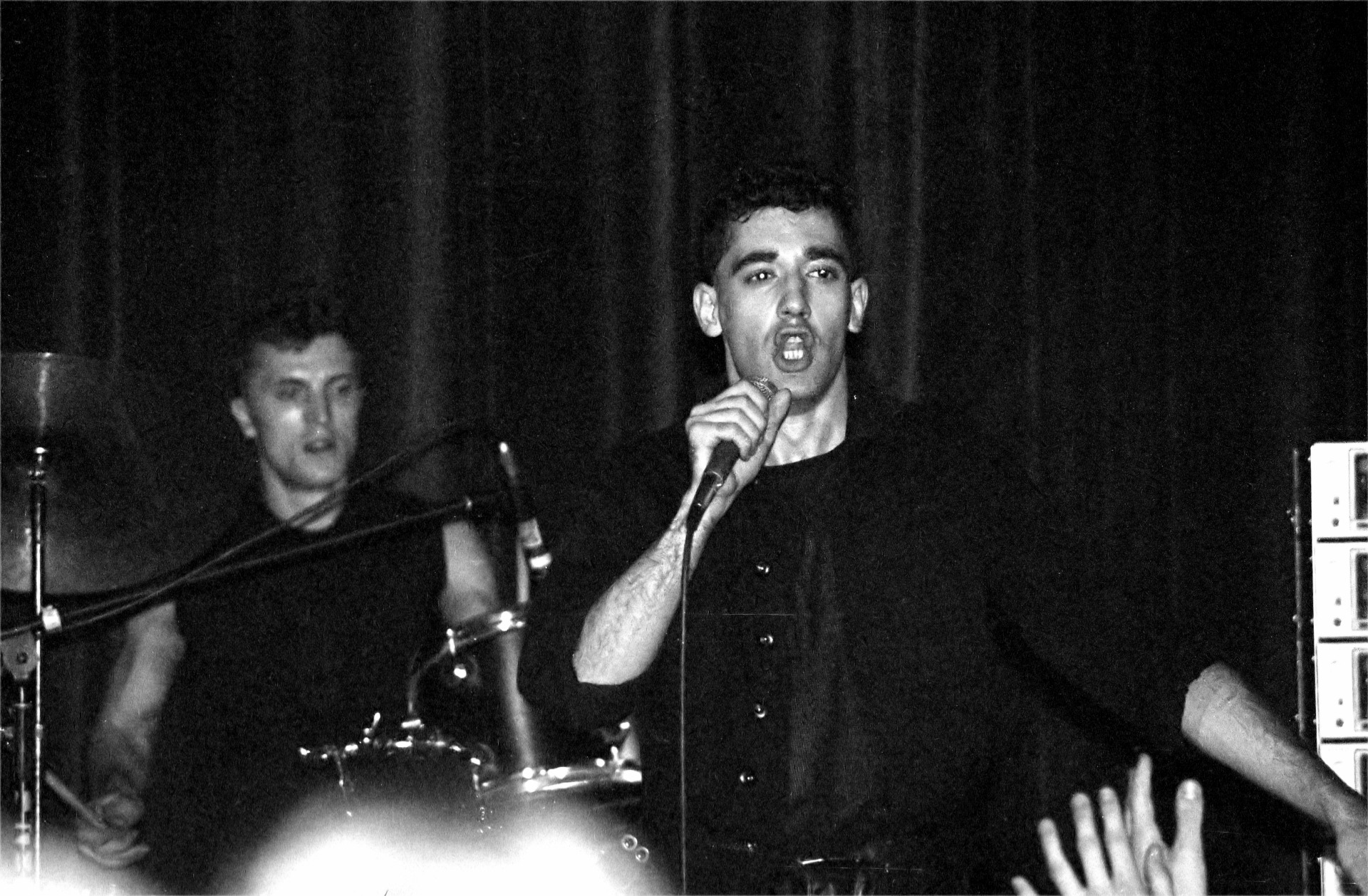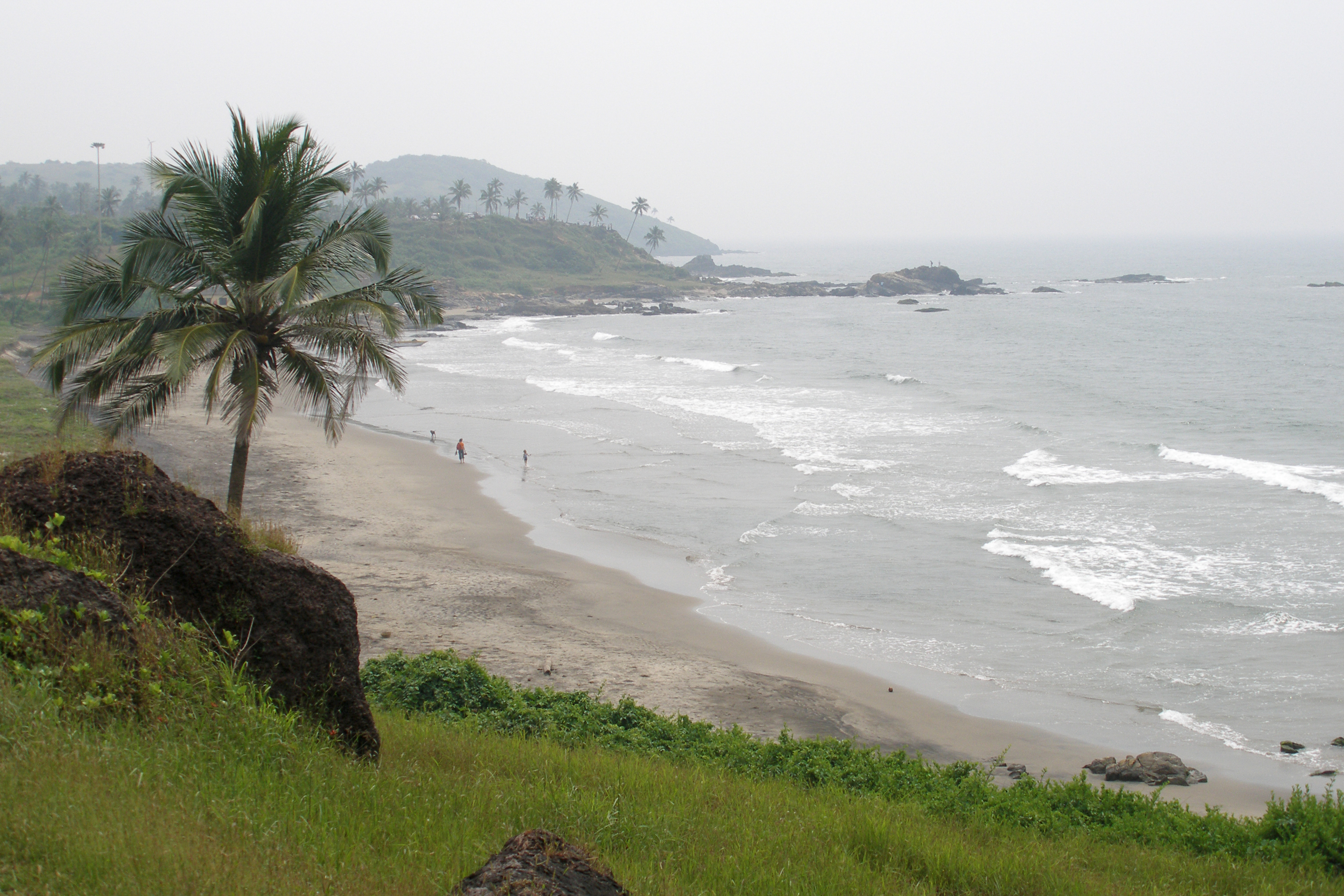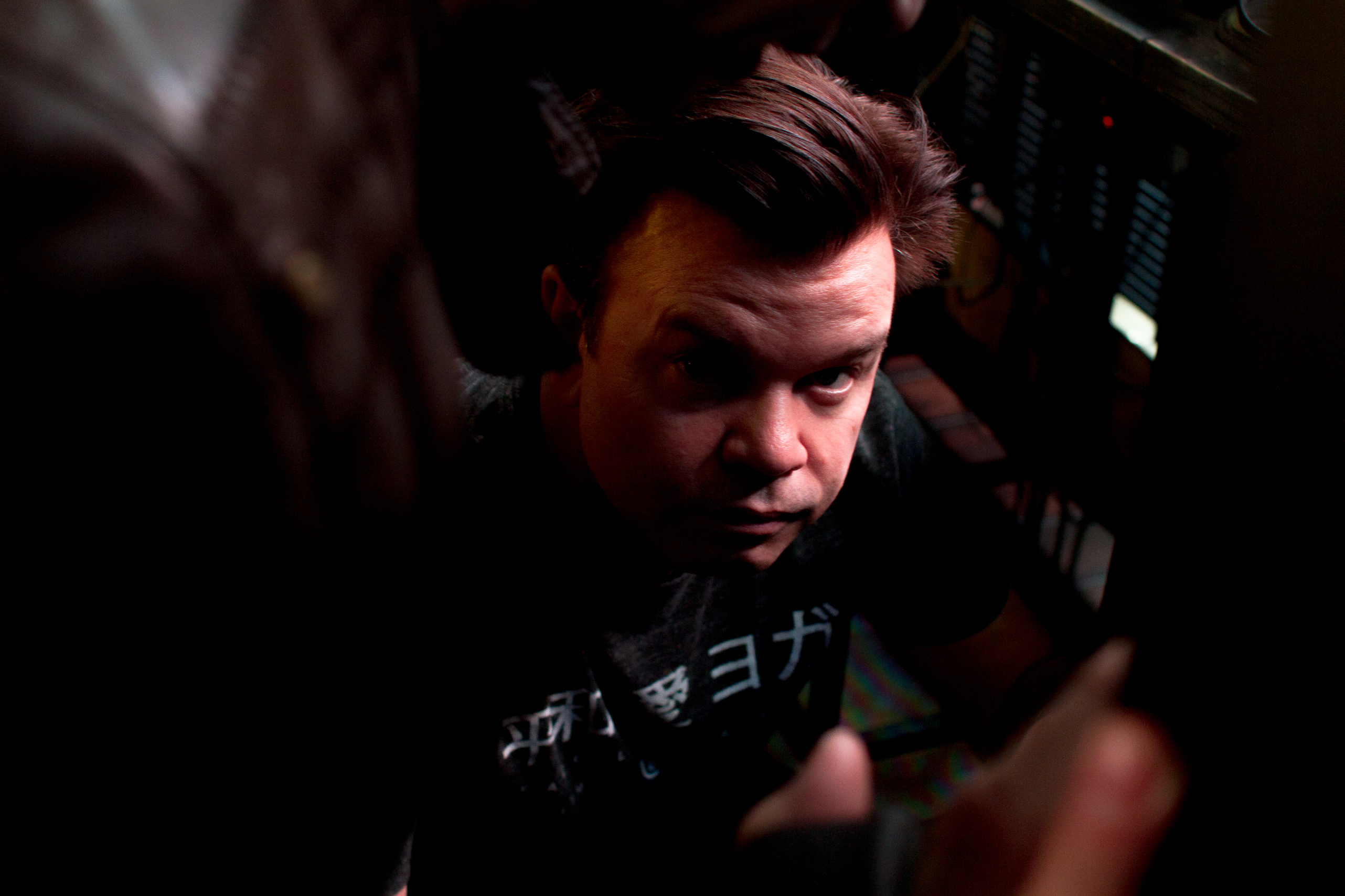|
Goa Trance
Goa trance is an electronic dance music style that originated in the early 1990s in the Indian state of Goa. Goa trance often has drone-like basslines, similar to the techno minimalism of 21st century psychedelic trance (psytrance). Psychedelic trance developed from Goa trance. History The music has its roots in the popularity of Goa, India, in the late 1960s and early 1970s as a hippie capital, and although musical developments were incorporating elements of industrial music, New beat and electronic body music (EBM), with the spiritual culture in India throughout the 1980s, the actual Goa trance style did not appear until the early 1990s. The music played was a blend of styles loosely defined as techno, New beat and various genres of "computer music" (e.g., high energy disco without vocals, acid-house, electro, industrial-gothic, various styles of house and electronic-rock hybrids). It arrived on tape cassettes by traveller-collectors and DJs and was shared (copied) tape-to-t ... [...More Info...] [...Related Items...] OR: [Wikipedia] [Google] [Baidu] |
Trance Music
Trance is a genre of electronic dance music that emerged from the British new-age music scene and the early 1990s German techno and hardcore scenes. Trance music is characterized by a tempo generally lying between 135–150 beats per minute (BPM), repeating melodic phrases and a musical form that distinctly builds tension and elements throughout a track often culminating in 1 to 2 "peaks" or "drops". Although trance is a genre of its own, it liberally incorporates influences from other musical styles such as techno, house, pop, chill-out, classical music, tech house, ambient and film music. A trance is a state of hypnotism and heightened consciousness. This is portrayed in trance music by the mixing of layers with distinctly foreshadowed build-up and release. A common characteristic of trance music is a mid-song climax followed by a soft breakdown disposing of beats and percussion entirely, leaving the melody or atmospherics to stand alone for an extended period before gradu ... [...More Info...] [...Related Items...] OR: [Wikipedia] [Google] [Baidu] |
Electronic Body Music
Electronic body music (acronymized to EBM) is a genre of electronic music that combines elements of industrial music and synth-punk with elements of disco and dance music. It developed in the early 1980s in Western Europe as an outgrowth of both punk and industrial music cultures. It combines sequenced repetitive basslines, programmed dance music rhythms, and mostly undistorted vocals and commandlike shouts with confrontational or provocative themes. The evolution of the genre reflected "a general shift towards more song-oriented structures in industrial as to a general turn towards the dancefloor by many musicians and genres in the era of post-punk."Timor Kaul: ''Electronic Body Music''. In: Thomas Hecken, Marcus S. Kleiner: ''Handbook Popculture.'' J.B. Metzler Verlag 2017, , p. 102–104. It was considered a part of the European new wave and post-punk movement and the first style that blended synthesized sounds with an ecstatic style of dancing (e.g. pogo). EBM gai ... [...More Info...] [...Related Items...] OR: [Wikipedia] [Google] [Baidu] |
Tempo
In musical terminology, tempo (Italian, 'time'; plural ''tempos'', or ''tempi'' from the Italian plural) is the speed or pace of a given piece. In classical music, tempo is typically indicated with an instruction at the start of a piece (often using conventional Italian terms) and is usually measured in beats per minute (or bpm). In modern classical compositions, a "metronome mark" in beats per minute may supplement or replace the normal tempo marking, while in modern genres like electronic dance music, tempo will typically simply be stated in BPM. Tempo may be separated from articulation and meter, or these aspects may be indicated along with tempo, all contributing to the overall texture. While the ability to hold a steady tempo is a vital skill for a musical performer, tempo is changeable. Depending on the genre of a piece of music and the performers' interpretation, a piece may be played with slight tempo rubato or drastic variances. In ensembles, the tempo is often ind ... [...More Info...] [...Related Items...] OR: [Wikipedia] [Google] [Baidu] |
Beat (music)
In music and music theory, the beat is the basic unit of time, the pulse (regularly repeating event), of the ''mensural level'' (or ''beat level''). The beat is often defined as the rhythm listeners would tap their toes to when listening to a piece of music, or the numbers a musician counts while performing, though in practice this may be technically incorrect (often the first multiple level). In popular use, ''beat'' can refer to a variety of related concepts, including pulse, tempo, meter, specific rhythms, and groove. Rhythm in music is characterized by a repeating sequence of stressed and unstressed beats (often called "strong" and "weak") and divided into bars organized by time signature and tempo indications. Beats are related to and distinguished from pulse, rhythm (grouping), and meter: Metric levels faster than the beat level are division levels, and slower levels are multiple levels. Beat has always been an important part of music. Some music genres such as fu ... [...More Info...] [...Related Items...] OR: [Wikipedia] [Google] [Baidu] |
Goa Mix
''The Goa Mix'' (also known as ''Goa Mix'') is a two-hour DJ mix by British musician and DJ Paul Oakenfold. It was originally broadcast on BBC Radio 1 as an ''Essential Mix'' on 18 December 1994 after the producer of the show, Eddie Gordon, chose Oakenfold to produce an eclectic DJ mix for the show which featured a burgeoning variation of electronic styles, having begun the previous year. Oakenfold had, at this point, developed his own unique Goa trance sound, influenced by his time at hippy gatherings on beaches in Goa, and employed it heavily into the mix, which also made pioneering use of film score samples. Oakenfold used the mix as an experiment in which he tried to fuse electronic music, especially trance music, with film score music, and then to overlay the result with vocal parts, samples and additional production. The mix was split into two parts, later referred to as the ''Silver Mix'' and the ''Gold Mix'' respectively. Reflecting the Goa influence, the album title did ... [...More Info...] [...Related Items...] OR: [Wikipedia] [Google] [Baidu] |
Essential Mix
The ''Essential Mix'' is a weekly radio show on BBC Radio 1 currently broadcast between 0:00 and 2:00 a.m. UK time on Saturday morning. Originally broadcast on 30 October 1993, the ''Essential Mix'' features contemporary DJs and music producers of electronic dance music. The show has been presented since its inception by Pete Tong and features an uninterrupted two-hour mix from a different artist each week, overlaid with occasional continuity announcements delivered by Tong. With a broadcast run in excess of 25 years, the ''Essential Mix'' is one of the longest-running programmes in the current BBC Radio 1 schedule. It is one of very few Radio 1 shows which is not broadcast live. Background The ''Essential Mix'' is a weekly radio show broadcast on BBC Radio 1 and features many styles of electronic dance music. It was created by Eddie Gordon, the producer of the show from the first broadcast in 1993 to 2001. In 1993, after months of receiving weekly mix shows on tape-cassette ... [...More Info...] [...Related Items...] OR: [Wikipedia] [Google] [Baidu] |
Perfecto Records
Perfecto Records is a British Trance music, trance record label, founded by Paul Oakenfold in 1989. Perfecto was also a remix team consisting of Paul Oakenfold and Steve Osborne and in its later years, Osborne was replaced by Andy Gray (musician), Andy Gray. Perfecto Records have provided remixes for U2, Moby, New Order (band), New Order, Rolling Stones, Simply Red and more. History Perfecto was founded by electronic music record producer and Disc Jockey, DJ Paul Oakenfold in 1989. At the time, house music and the Balearic beat, balearic style was beginning to break into the mainstream and Oakenfold was working as an A&R man for Champion Records (UK), Champion Records. The label was distributed through Warner Music through the 1990s, until Paul Oakenfold moved distribution to Mushroom UK in 1998. Following the acquisition by Warner Music of Mushroom UK, the Perfecto catalogue since 1998 transitioned to Warner Music and a couple of years later Perfecto began to operate and relea ... [...More Info...] [...Related Items...] OR: [Wikipedia] [Google] [Baidu] |
Paul Oakenfold
Paul Mark Oakenfold (born 30 August 1963), formerly known mononymously as Oakenfold, is an English record producer, remixer and trance DJ. He has provided over 100 remixes for over 100 artists including U2, Moby, Madonna, Britney Spears, Massive Attack, the Cure, New Order, the Rolling Stones, the Stone Roses and Michael Jackson. Oakenfold was voted the No. 1 DJ in the World twice in 1998 and 1999 by ''DJ Magazine''. Biography Early life Oakenfold was born on 30 August 1963 at Mile End Hospital. His father delivered the ''London Evening News''. He lived in Highbury, Greenhithe, then Croydon, attending Archbishop Lanfranc School, then studied to be a chef for four years and worked at the Army and Navy Club. Early career: 1980–1984 Paul Oakenfold describes his early life as a "bedroom DJ" in a podcasted interview with Vancouver's ''24 Hours'', stating he grew up listening to the Beatles. Oakenfold's musical career began in the late 1970s, when he met Trevor Fung and began ... [...More Info...] [...Related Items...] OR: [Wikipedia] [Google] [Baidu] |
Megatripolis
Megatripolis was an underground London club night created by Encyclopaedia Psychedelica/Evolution editor and founder of the Zippie movement Fraser Clark, and partner Sionaidh Craigen as well as a great many others. The club combined New Age ideology with Rave culture to create a vibrant, festival-like atmosphere presenting a wide variety of cross-cultural ideas and experiences. Club nights ran regularly on Thursdays from 1993 until 1996, being the focus of much of the Zippie movement. The club and its related activities also helped to popularise ideas such as cyberculture and the Internet between those years. History and venues The club first started at The Marquee in London when it was at 105 Charing Cross Road partly inspired by ideas and ideals coming out of the recession of the early nineties. Promoted by evolution / dream and at first as a collaboration with Tribal Energy on Thursday nights in June 1993. The club hosted a lecture by Terence McKenna on its opening night wit ... [...More Info...] [...Related Items...] OR: [Wikipedia] [Google] [Baidu] |
Goa Gil
Goa Gil, born ''Gilbert Levey'', is an American-born musician, DJ, remixer and party organizer. He is one of the founders of the goa trance and psytrance movement in electronic music. Biography Gil was born in 1951 and grew up in San Rafael, California. He witnessed the birth of the hippie movement and acid rock, and was involved with the freak collectives Family Dog and Sons of Champlin. Feeling that the San Francisco musical scene was falling apart, he took off in 1969, going first to Amsterdam and then to India, settling in Goa. Here he discovered the sadhus, wandering holy men living off the forest, covering themselves with ash, and drinking the "elixir of the gods." Soon, Gil himself became a Sadhu, Baba Mangalanand, in the order of the Juna Akhara, under the Guru, Mahant Nirmalanand Saraswati. During the early 1980s, many Goa hippies were becoming increasingly fascinated with early electronic music such as Kraftwerk. Gil and his friends soon gathered some equipment and ... [...More Info...] [...Related Items...] OR: [Wikipedia] [Google] [Baidu] |
MIDI
MIDI (; Musical Instrument Digital Interface) is a technical standard that describes a communications protocol, digital interface, and electrical connectors that connect a wide variety of electronic musical instruments, computers, and related audio devices for playing, editing, and recording music. The specification originates in the paper ''Universal Synthesizer Interface'' published by Dave Smith and Chet Wood of Sequential Circuits at the 1981 Audio Engineering Society conference in New York City. A single MIDI cable can carry up to sixteen channels of MIDI data, each of which can be routed to a separate device. Each interaction with a key, button, knob or slider is converted into a MIDI event, which specifies musical instructions, such as a note's pitch, timing and loudness. One common MIDI application is to play a MIDI keyboard or other controller and use it to trigger a digital sound module (which contains synthesized musical sounds) to generate sounds, which t ... [...More Info...] [...Related Items...] OR: [Wikipedia] [Google] [Baidu] |



.jpg)


.jpg)